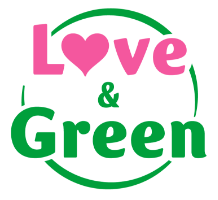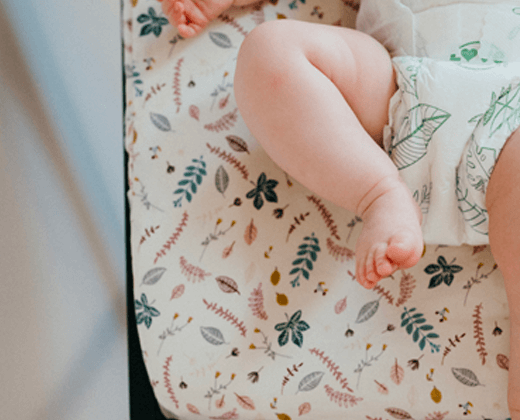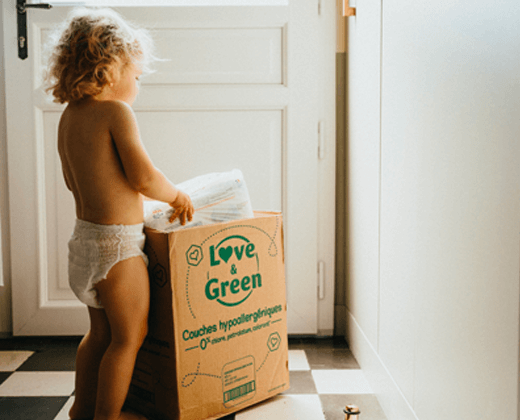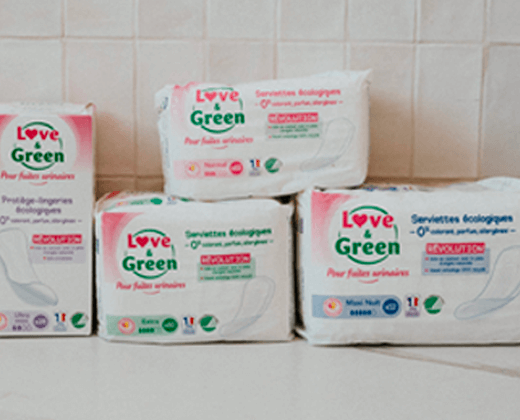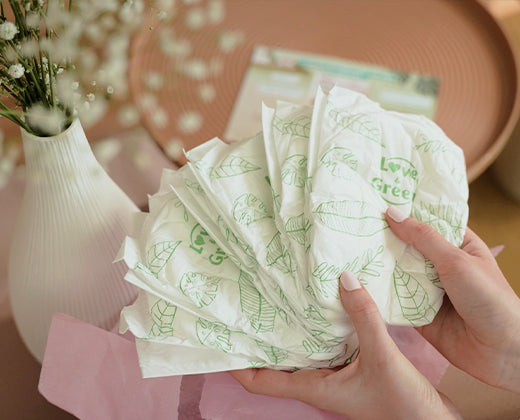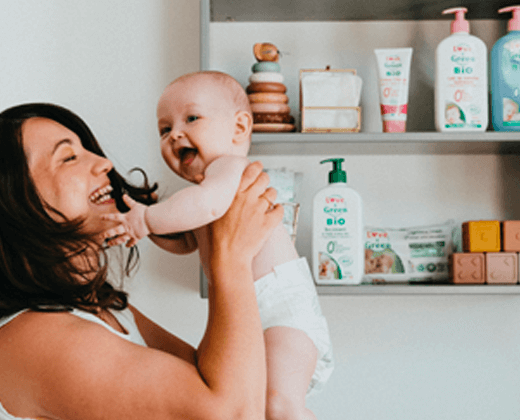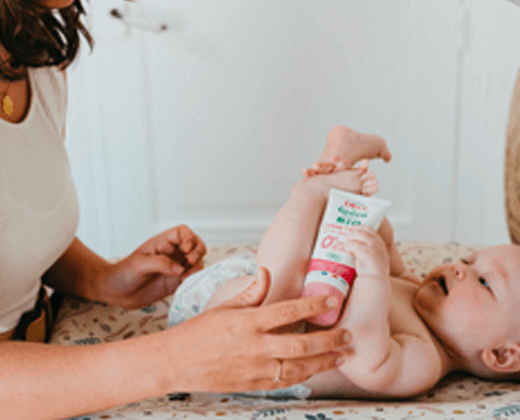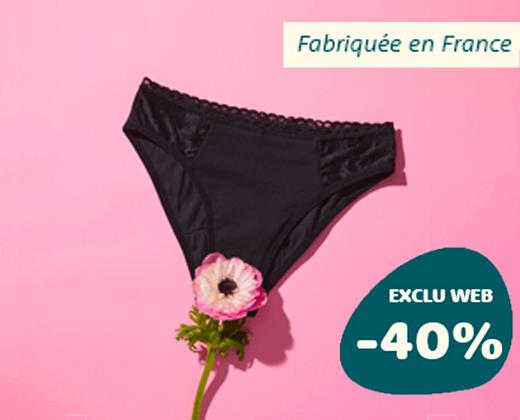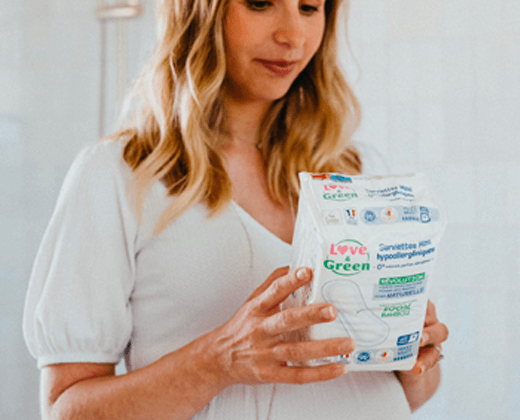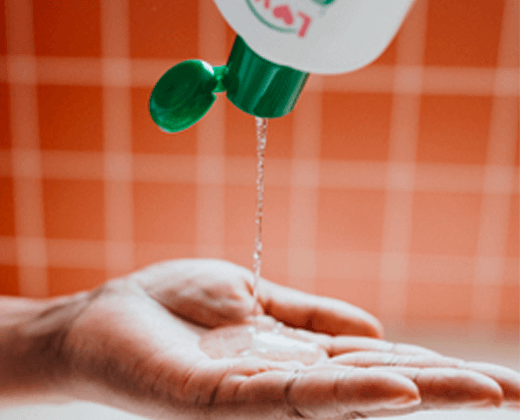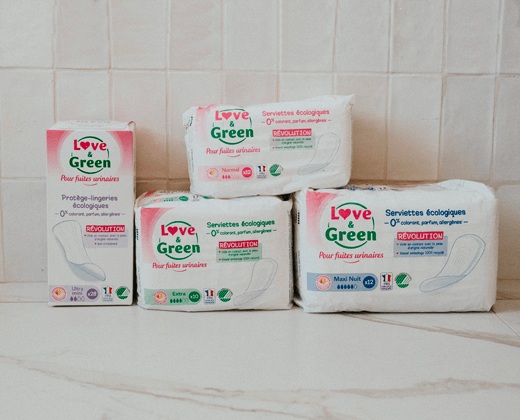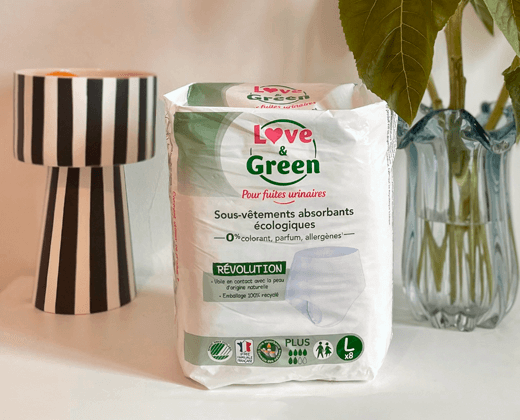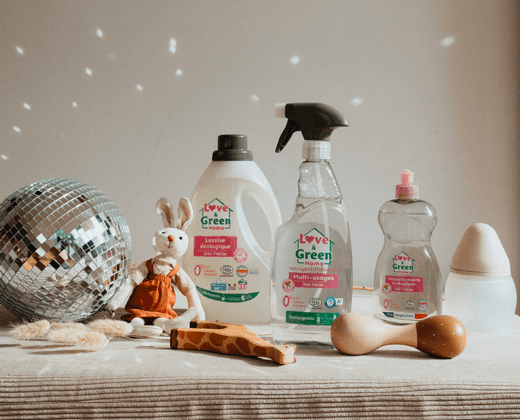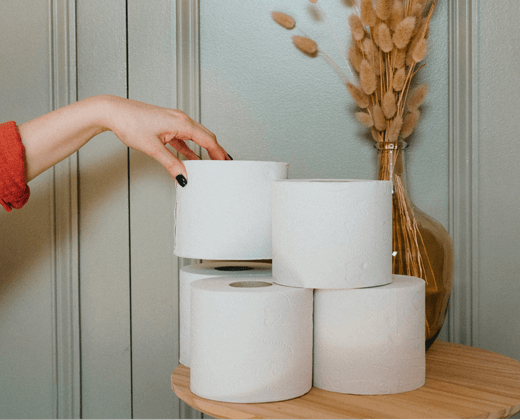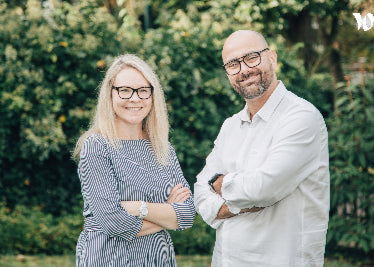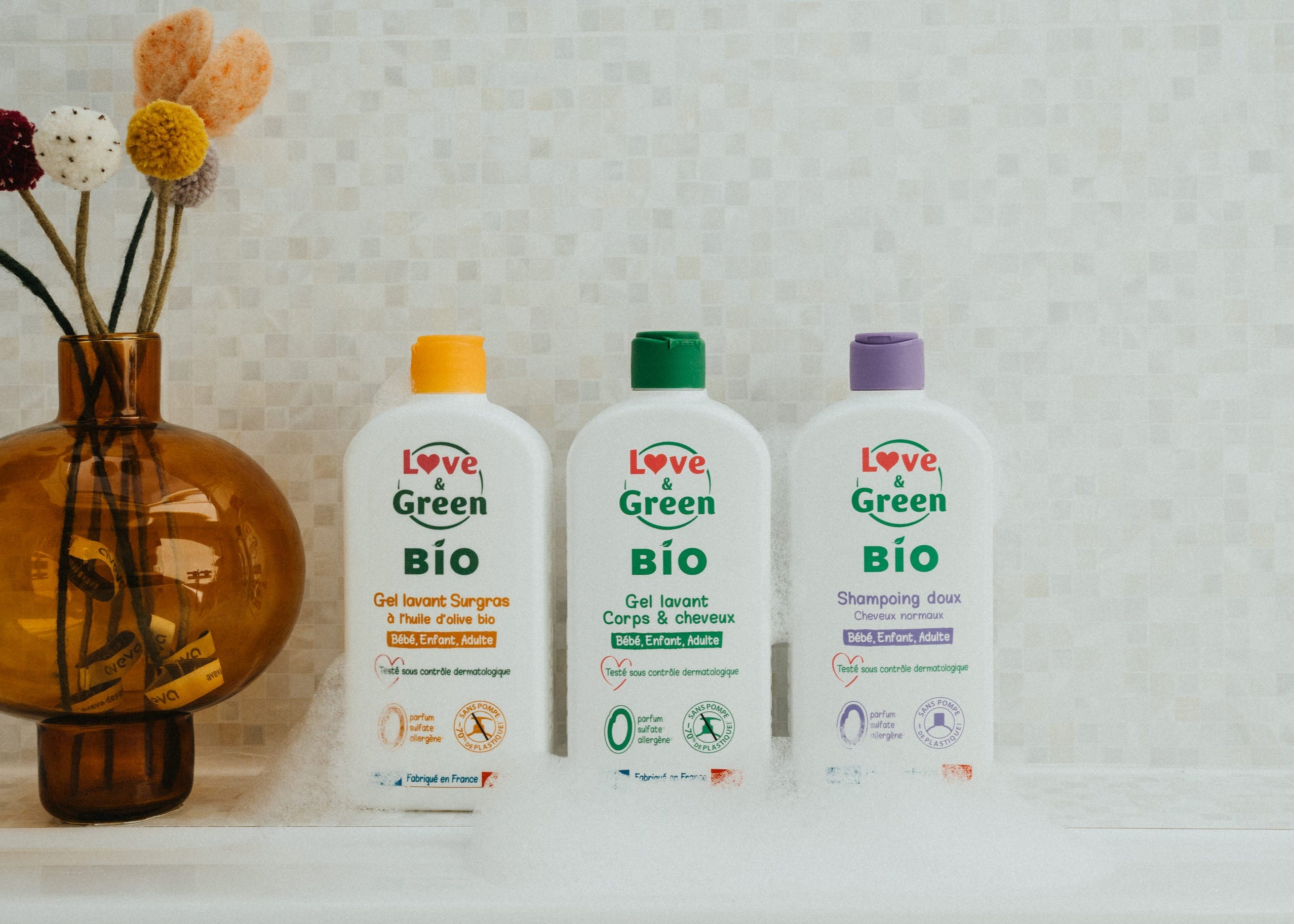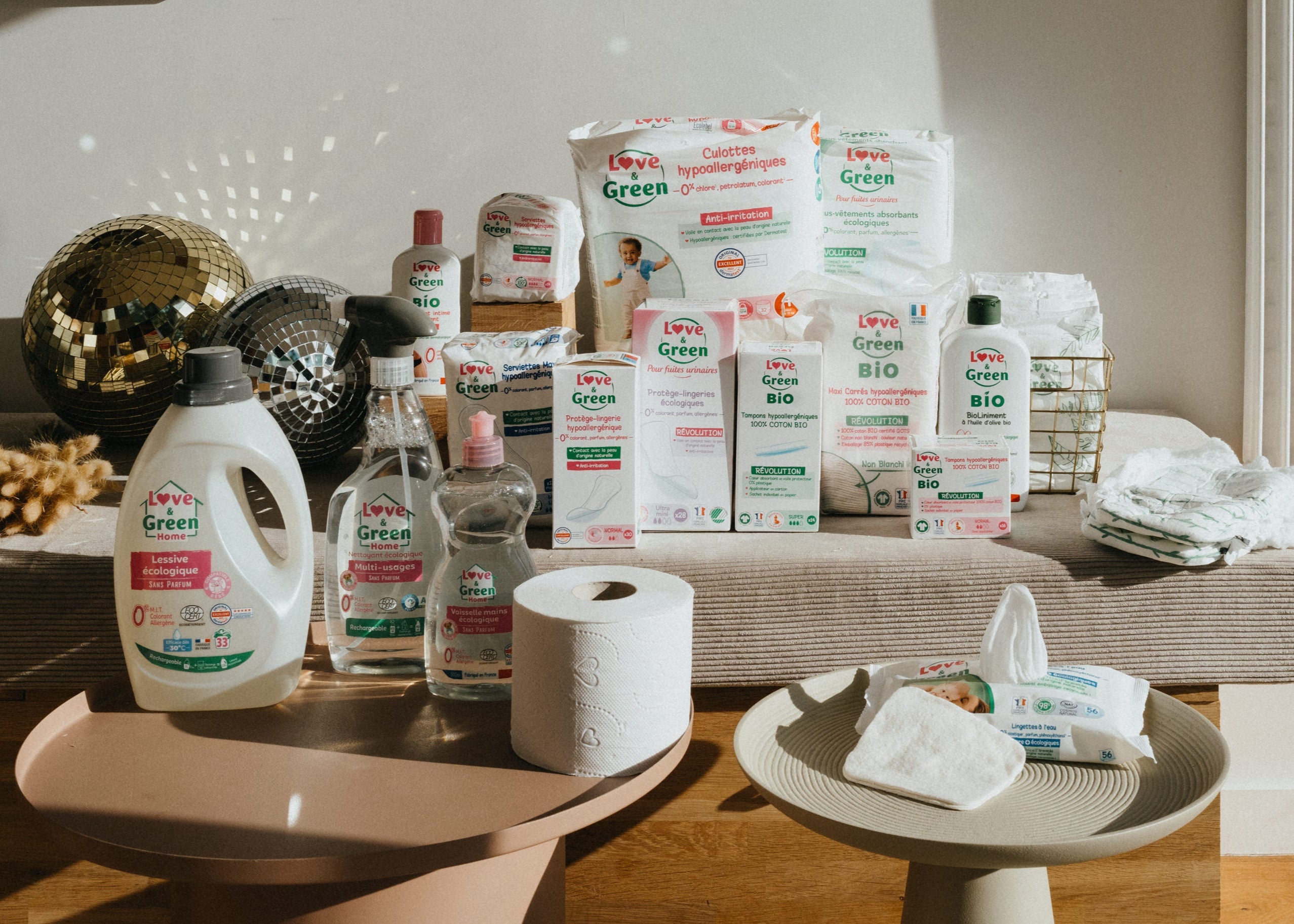Baby is coming soon, and you are lost in the jungle of diapers: organic, green, hypoallergenic, certified, tested, approved by the neighbor's cousin? We understand you. It's a bit of a headache when you start to look at the different speeches of the brands and this choice is very important since we are talking about small baby buttocks to protect day and night for (hang on) three good years!
As a mission business, we decided to say stop for greenwashing and help you disentangle the true from the false, we decipher the crucial information to take into account around the ecological layer and we do it transparently 😊
In this article, we offer a comparative table factual So that you can make your own choice in an enlightened way.
In summary:
🍼 A crucial choice for health and the planet
This article gives you the keys if you are looking for a really ecological layer. The ecological layers appear to be a more responsible alternative to conventional layers, but not all are equal.
✅ Which defines a real green layer
To be considered ecological, a layer must ideally:
-
Have a recognized label (European Ecolabel, Nordic Swan or Gots)
-
Contain Natural materials
-
Be designed for Reduce waste and carbon footprint
-
Do not add intentionally controversial substances (perfume, chlorine, endocrine disruptors ...)
🔍 A objective comparison
The article offers a comparative table Based on transparent criteria (labels, composition, naturalness rate, manufacturing location, etc.) which are all detailed below.
💡 In summary
In this article, we invite you to vigilance in the face of greenwashing and we encourage you to support verifiable data rather than marketing promises. We remind you that no disposable layer is organic or 100% natural and that you must be wary of blurred mentions. THE choice of an ecological layer is an act of health, consistency and CSR engagement.
------------------------------------------------------------------------------------------------
🍼 Why choose the right layer is essential?
Three years. 24 hours a day. This is the time that a layer will spend in contact with your baby's buttocks. Suffice to say that it is better to find out and peel the products to find out what will be best for your baby. How to know which layer will suit your baby?
Ecolo diapers: promise in the air or real alternative?
Ecological layers are a more responsible alternative to conventional layers. But not all of them are worth. Here is The promises they display :
- Natural raw materials
- No controversial substances (Bye-bye perfume, lotion, coloring ...)
- Less plastic, recyclable packaging, reduction in the carbon footprint
- Reinforced toxicological tests, ecological certifications
- Healthier for baby
Spoiler: No disposable layer is organic. For what ? Because it contains cellulose from trees, but a tree is not certified organic. Do not be blinded by this magic word which is synonymous with greenwashing.
At Love & Green we decided so that you can see more clearly to compare brands according to factual criteria.
🧐 The criteria (really) important if you are looking for an ecological layer
1- Labels: According to the public authorities, a so-called ecological layer must at least have one of these 3 recognized labels:
has. European Ecolabel
b. Nordic Swan Ecolabel
c. Gots
Meet on the ADEME website for more information: https://agirpourlatransition.ademe.fr/particuliers/labels-environnementaux#labelsrow-3
2- Naturality: It is important that the brand is transparent on its composition and favors materials of natural or biosourced origin.
3- Eco-conception of the product: The brand must communicate on its commitments. The layer should be designed to lower waste and its carbon footprint.
By taking into account this definition of the public authorities concerning labels, only 4 brands of layers are really ecological, that is to say certified and audited by external labels.
The information noted in these tables for each criterion result from the marks themselves by the mentions focused on the packaging, the information disseminated on their website or result from the production of weight decomposition carried out on the product by an independent third-party laboratory and/or independent control organizations.
Explanations of the criteria (in all transparency):
We have selected factual criteria and exhaustively for parents who wish to take care of the health of their baby and that of the planet. Did you know that when you perform a life cycle analysis of a layer (ACV), the 2 most important positions are: the raw materials and the end of life of the product? This is why we speak to say stop at Greenwashing and give you the keys to decipher the market.

1. Ecological labels
According to ADEME (agency of the ecological transition), a layer can be said to be ecological if it is labeled by one of these 3 labels:
- European Ecolabel: compliance with strict environmental criteria
- Nordic Swan: Ecological Scandinavian label
- GOTS (for washable layers in organic certified cotton - does not concern disposable layers)
👉 A reliable logo is better than a fuzzy promise. Check them! Companies that have these certifications are audited every year by labels and cannot say anything about their packages because everything must be justified or proven.
2. Other labels and certifications
- Oeko-tex: tested without harmful substances (rather known for textiles)
- FSC®: Cellulose present in the layer's cushion is from sustainably managed forests
- TCF: Totally Chlorine Free, whitening of chlorine -free cellulose chlorine
- ECF: Elementary Chlorine Free, whitening of cellulose with chlorinated derivatives
- Cruelty Free and Vegan: Certifies that the product has not been tested on animals and contains no ingredients of animal origin.
- Dermatest®: Ensures that the product has been tested under dermatological control by an independent institute and that it is well tolerated by the skin, including sensitive skin
- Skin Heath Alliance: Test that the product has been accredited by independent dermatologists, ensuring that it meets standards in terms of safety, efficiency and skin tolerance.
- Origin France Guarantee: Ensures that the product is manufactured in France (at least 50% of the unit cost price of the product is acquired in France where the essential characteristics of the product are acquired in France.)
- European Vegetarian Union: Is the organization of European vegan and vegetarian associations and societies.
- Din Geprüft: German program to certify the percentage of biosourcé of an entire product or specific components.
3. The composition, a very important criterion
To choose the right layer brand, you have to understand what a layer is made up of: the percentage of naturalness of a layer is the most important criterion to reduce its carbon footprint. The higher the percentage of naturalness, the more the layer is ecoconned and low carbon.
- Sail in contact with the skin: this is the part that is in contact with baby's skin, so it is better to favor a completely of natural origin (soft, hypoallergenic and breathable) to respect baby buttocks and avoid redness.
- Absorbent cushion: it is the heart of the layer, the one that keeps baby's buttocks dry. It is made up of a mixture of cellulose (the famous paper pulp) and Ultra absorbent microbeads. These microbeads are generally made from sodium polyacrylate of petrochemical origin, but there are also alternatives bio-sourced just as efficient.
💡 A thicker cushion does not mean better absorption! It is not the centimeters of cellulose that count, but the effectiveness of microbeads. A too plump cushion is more waste, a "big buttocks" effect, and it takes up more space at home. Not great for baby or for the planet.
- Anti-leaky barriers: to avoid accidents, double side barriers are essential. Just like the veil favor contact with the skin of natural origin.
- External sail: it is the outside veil, which allows the layer to be waterproof while letting the skin breathe.
Watch out for the percentage of naturalness of the layer. Spoiler: no layer is 100% of natural origin, this mention refers to a part of the layer and not to the entire product. This is why it is important to find out and pay attention to the small lines.
And like the skin of newborns, is very sensitive to birth, it is better to favor a layer:
- Without perfume or lotion, just to not irritate baby's skin.
- Without chlorine chlorine : The mention TCF is your ally, ECF much less ...
- Without controversial substances (phthalates, endocrinian & cie disruptors): no suspicious ingredients for baby buttocks 😊
4. Weight of the layer
Regarding the layer It is also important to look at the thickness of the layer: a layer too thick that means a lot of cellulose and therefore a lot of cut trees! A thicker layer does not mean a more absorbing layer and can generate much more waste. On the contrary, a layer that is thinner and with an absorption "noted a" is a really eco -designed layer!
5. Brand transparency
A really transparent brand:
- Displays the whole composition and details (website + directly on the package). This information has become compulsory, but brands are not forced to specify where each subject is located.
- Publishes her regularly toxicological reports
- Shows her absorption (note a = top)
If she hides information, run away. 🏃 Find all the information on Love & Green here: https://www.loveandgreen.fr/pages/nos-tests-produits
6. The country of manufacture
It is important that the brand is transparent with the place of manufacture of its products.
💡 The “manufactured in France” can be attractive, but does not guarantee a cleaner composition or a reduced carbon footprint but on the other hand it created jobs in France and reindustrializes the country. In the case of diapers, it's a little more complex than that.
At Love & Green, we opted for Spain, and not for tapas: our partner factory allows us reach a record naturalness rate of 63 to 74% And to reduce our carbon footprint by 36% compared to our 2018 layer. Not bad, when all the brands on the market are below 42%?
For what ? Thanks to state -of -the -art machines, optimized design, productions with green energy, emissions compensation and real environmental monitoring via an ultra -complete life cycle analysis (ACV). And in 2024, our factory even went so far as to plant an entire forest near the factory!
To find out more about our partner manufacturer in Spain RDV on our Instagram account: https://www.instagram.com/p/DJ4Yp9js6go/
👉 Morality: For decarbonation and naturality, this is not the place that does everything (transport represents only 7% of the carbon emissions of a layer!), But the choices of materials, the technologies used ... and no, even locally, the layers are not direct from the factory to your mailbox (we have checked).
7. Headquarters/nationality of the company
A company based in France creates jobs and pays its taxes in France.
At Love & Green we are a French SME of 30 people based in Rueil Malmaison and committed as SME+.
8. CSR commitments
A real green brand is not just a pretty green leaf on the package, it's also CSR commitments (Corporate social responsibility).
What does it mean concretely? Let the brand think of everything: baby's health, planet, working conditions throughout the production chain - from the buttock to the buttocks.
And if it is labeled SME+, it's even better! This is the CSR label of French companies 😊 It’s a bit like having a gold medal for good environmental and societal practices, awarded by an independent organization.
Mission : A company that is a mission company registered in its statutes its raison d'être and is audited to be sure that it respects the mission it imposed.
We invite you to discover our mission here: https://www.loveandgreen.fr/pages/notre-mission
Bioed : The BioentrePriseable Label, is a sectoral CSR label which aims to support companies in the adoption of responsible and sustainable practices, while promoting their commitment to organic farming.
💡 Small advice from curious: go see the section "Our commitments" or impact reports on the brand of the brands.
9. Sizes available
From birth to cleanliness, target wide (minimum size 1 to 6), the brand that accompanies baby must accompany it until clean!
Bonus: the Size 4+, a must between 4 and 5 for more absorption.
10. Subscription availability
The subscription allows you to lighten your mental load and that we say yes!
The subscription allows you:
- To be delivered at a relay point or at home
- To always have your stock of diapers
- To save money
Ideal to never be short and reduce the mental load and in general it is without obligation! Check this criterion well.
11. Où l’acheter ?
Because you are never immune to forgetting ... Choose a brand that you can find everywhere:
- In supermarkets
- In pharmacy
- Online
🏆 Express reminder: the 5 questions to ask to choose a really green layer:
- Is the composition clearly displayed?
- Are there reliable labels?
- Is the brand transparent?
- Is the veil in contact with the skin of natural origin?
- What is the percentage of naturalness of the layer?
We tell you everything about the criteria not taken into account in this comparison:
- Short circuit: spoiler alert: the short circuit does not exist for diapers! The short circuit is a concept that exists for the live food of the producer! Stop false speeches, this does not apply to diapers! The layer is a highly transformed industrial product, many of the raw materials from abroad. In addition, all brands have logistics warehouses and do not practice delivery from the manufacturing plant.
- Size 0: Some available comparisons valued this size. We have chosen to indicate the sizes available for each brand exhaustively but did not highlight a size more than another. (why not highlight size 4+ or size 6 for example?)
And finally, no classification, no rating in our comparison! We give you factual, transparent and science information.
📌 Conclusion
Choosing an ecological layer is not giving in to cute packaging or pseudo-natural or organic claims. It is a real choice of health, commitment, transparency. And if it still seems unclear, nothing beats a test.
👉 At Love & Green, we offer you a Free trial kit. Because yes, you have the right to test before adopting.
This comparison will be updated every 3 months. If brands change their composition, they can contact us to make the changes.
MAJ: July 2025
